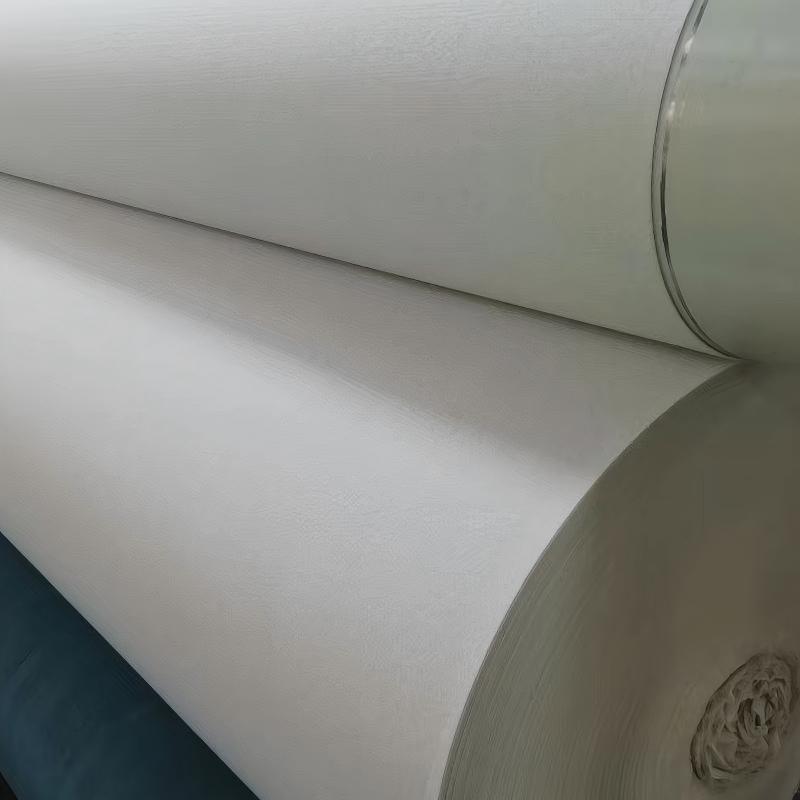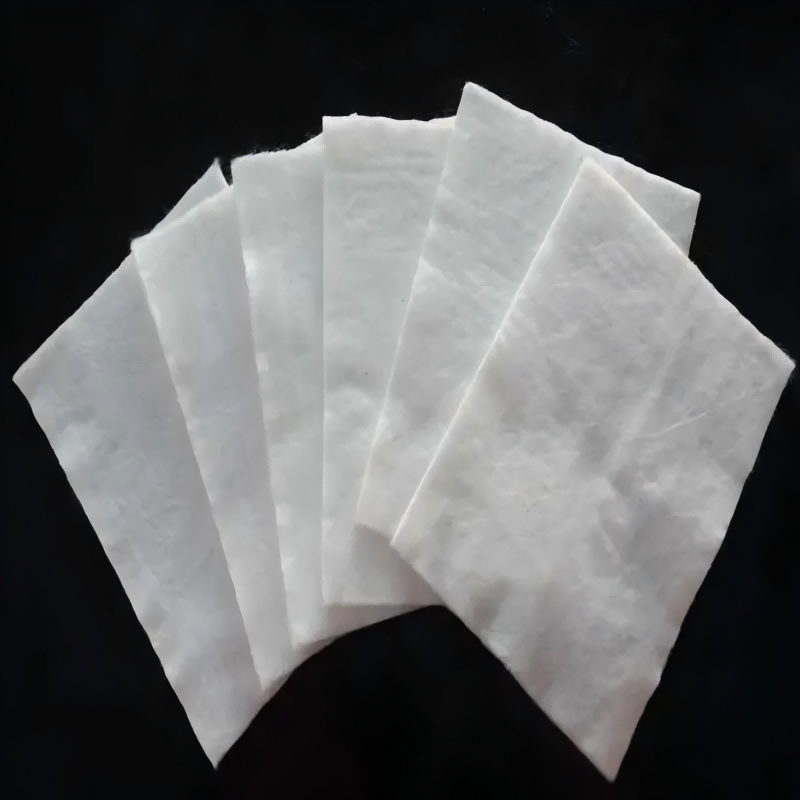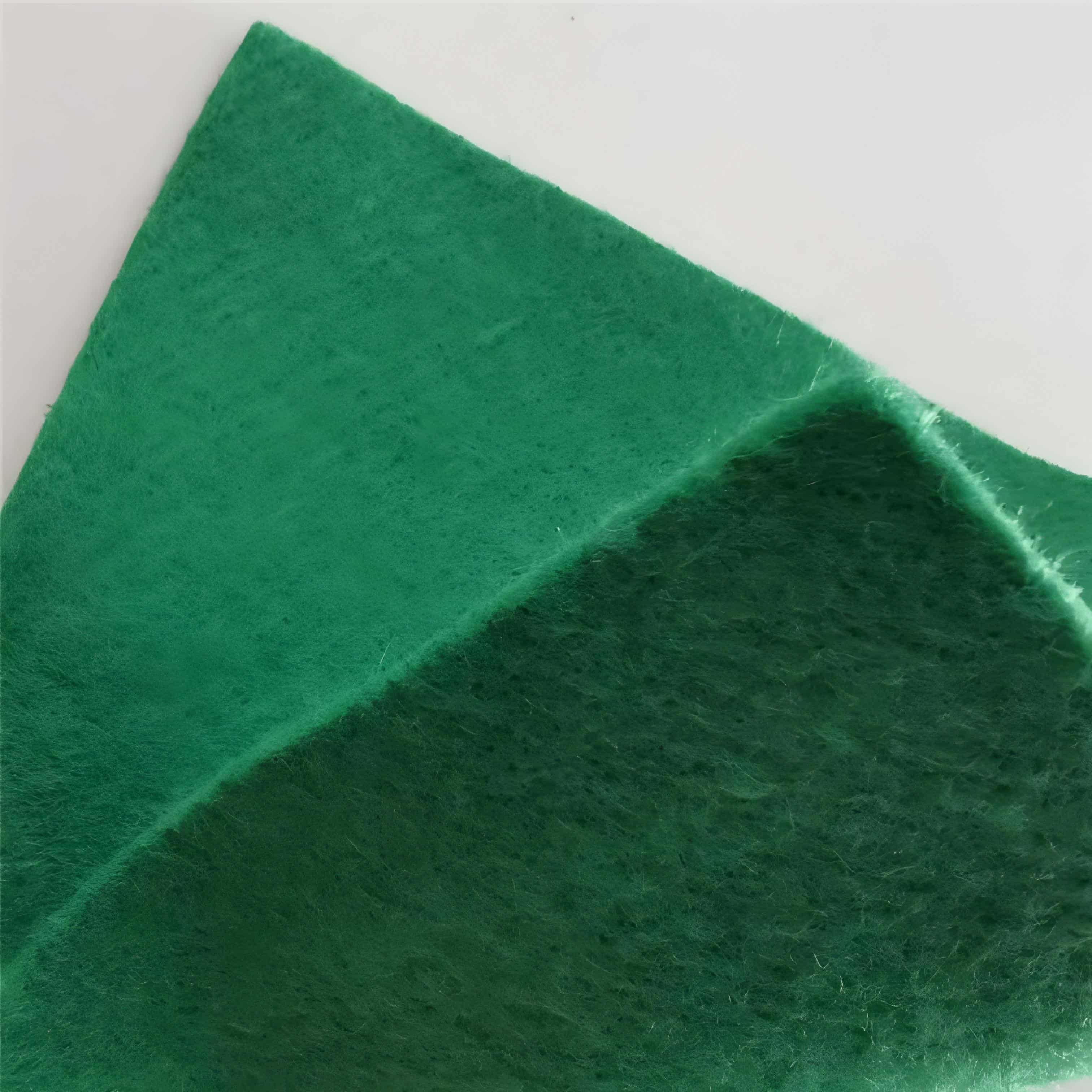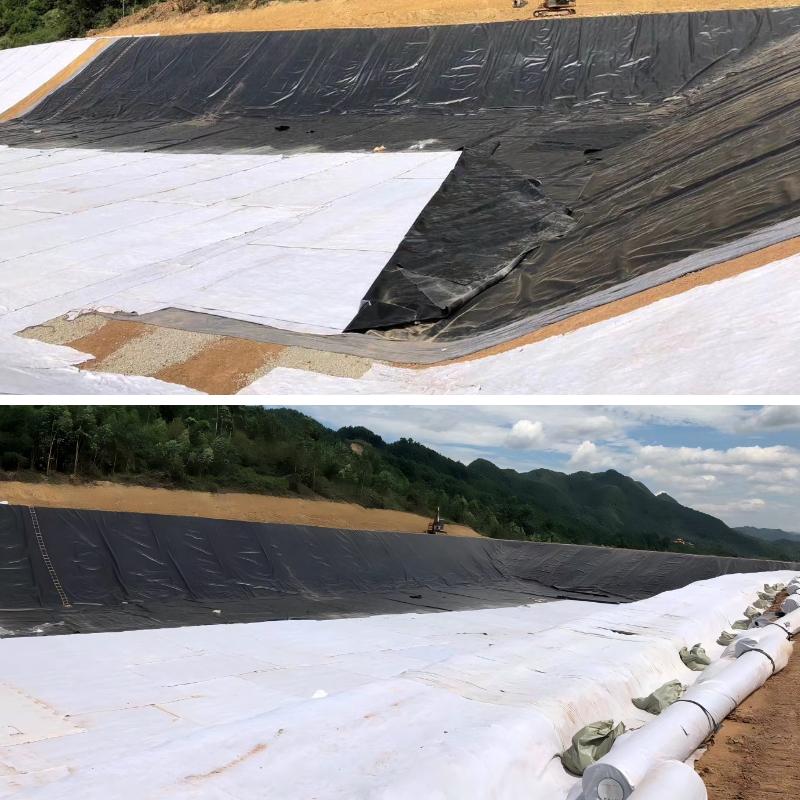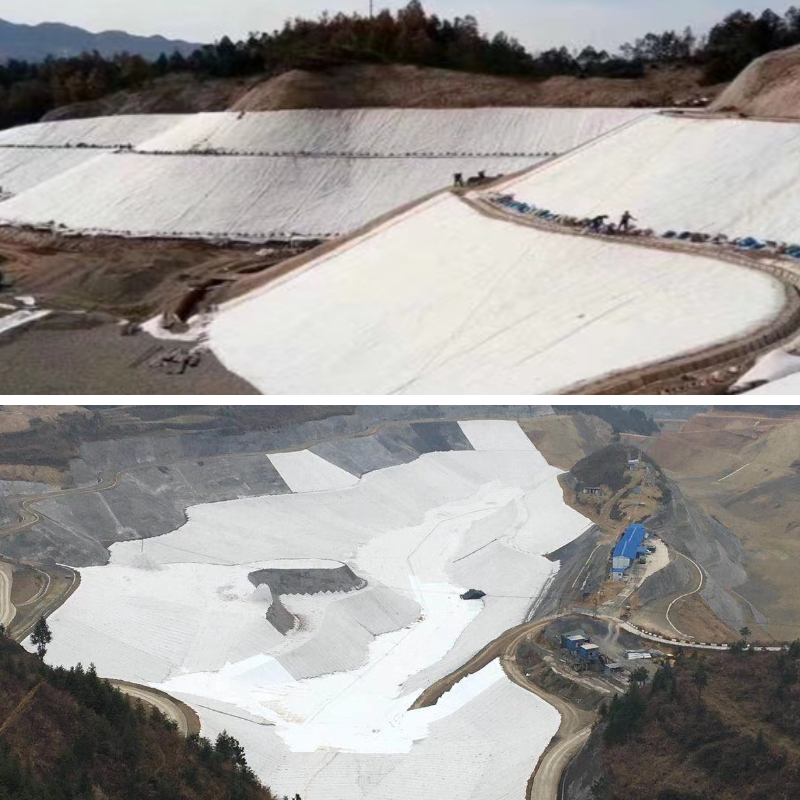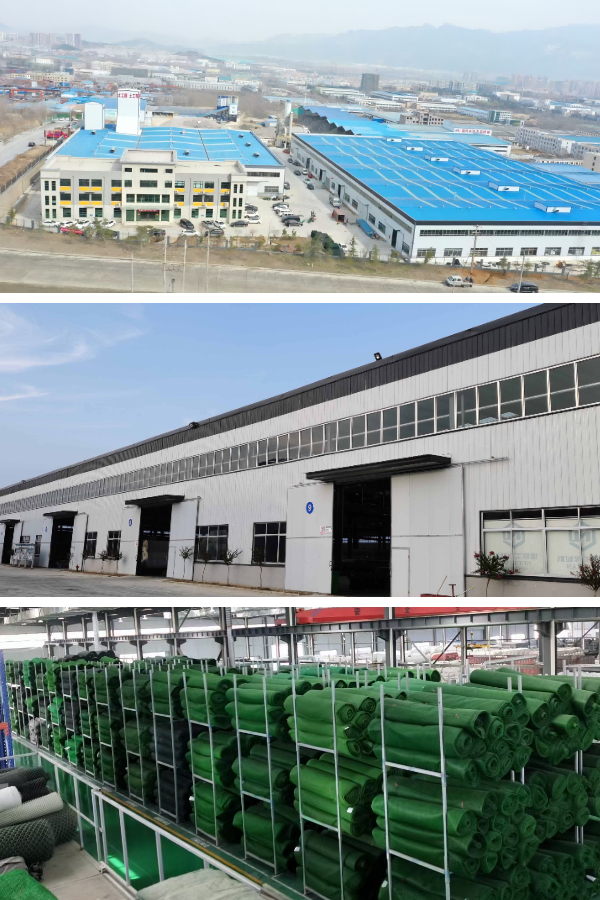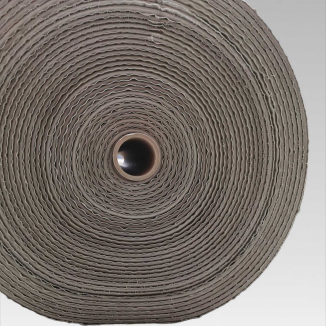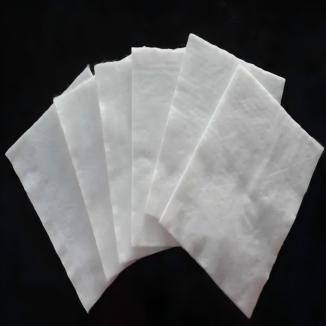Knitted Geotextile
1.Durable and Tough: With a moderate thickness of 8 oz, it has dense fibers, offering good tensile strength and wear resistance. It remains intact even when buried for long-term use, stabilizing the project structure.
2.Water Filtration & Soil Retention: Its porous structure can block soil particles to prevent erosion, while allowing smooth water penetration, avoiding soil softening caused by water accumulation.
3.Isolation & Protection: It separates different construction layers to prevent mixing, and also cushions impacts, reducing puncture damage to facilities from sharp objects.
4.Easy Construction: Soft and flexible, it can be easily cut to fit irregular areas. Its moderate weight saves labor and time during construction.
Product Introduction
I. Basic Properties
Material and Craftsmanship: Knitted Geotextile is made using a nonwoven process. The fibers are interwoven to form a porous structure, resulting in a soft and stretchable material.
Specifications: With a grammage of 8 ounces (corresponding to moderate thickness), a high fiber density, and balanced longitudinal and transverse tensile strength, it is suitable for common engineering scenarios.
II. Core Functions
Water Filtration and Soil Conservation: The porous structure traps soil particles to prevent soil erosion while allowing rainwater and groundwater to penetrate freely, preventing waterlogging and softening of the soil.
Isolation and Protection: Separates different building layers (such as gravel and soil) to prevent interlayer material mixing, cushions impacts, and reduces puncture damage to engineering facilities from sharp objects.
Structural Stability: With its tensile and abrasion-resistant properties, it withstands construction compaction and soil settlement, making it durable and durable during long-term underground use, ensuring structural stability.
III. Main Features
High Practicality: The thickness and weight are moderate, balancing durability and cost-effectiveness, making it suitable for a variety of construction scenarios, including roadbeds, slopes, and trenches.
Easy Installation: The soft texture is easy to cut, adapting to irregular construction areas. Transporting and laying require minimal effort, shortening construction cycles and reducing labor costs.
Long-Term Reliability: The material exhibits excellent aging and corrosion resistance, ensuring long-term performance degradation in underground or outdoor environments, extending the life of the project.
Product Parameters
project | metric | ||||||||||
Nominal strength/(kN/m) | |||||||||||
6 | 9 | 12 | 18 | 24 | 30 | 36 | 48 | 54 | |||
1 | Longitudinal and transverse tensile strength / (kN/m) ≥ | 6 | 9 | 12 | 18 | 24 | 30 | 36 | 48 | 54 | |
2 | Maximum elongation at maximum load in longitudinal and transverse directions/% | 30~80 | |||||||||
3 | CBR top penetration strength /kN ≥ | 0.9 | 1.6 | 1.9 | 2.9 | 3.9 | 5.3 | 6.4 | 7.9 | 8.5 | |
4 | Longitudinal and transverse tearing strength /kN | 0.15 | 0.22 | 0.29 | 0.43 | 0.57 | 0.71 | 0.83 | 1.1 | 1.25 | |
5 | Equivalent aperture O.90(O95)/mm | 0.05~0.30 | |||||||||
6 | Vertical permeability coefficient/(cm/s) | K× (10-¹~10-), where K=1.0~9.9 | |||||||||
7 | Width deviation rate /% ≥ | -0.5 | |||||||||
8 | Unit area mass deviation rate /% ≥ | -5 | |||||||||
9 | Thickness deviation rate /% ≥ | -10 | |||||||||
10 | Thickness coefficient of variation (CV)/% ≤ | 10 | |||||||||
11 | Dynamic perforation | Puncture hole diameter/mm ≤ | 37 | 33 | 27 | 20 | 17 | 14 | 11 | 9 | 7 |
12 | Longitudinal and transverse fracture strength (grab method)/kN ≥ | 0.3 | 0.5 | 0.7 | 1.1 | 1.4 | 1.9 | 2.4 | 3 | 3.5 | |
13 | Ultraviolet resistance (Xenon arc lamp method) | Longitudinal and transverse strength retention rate% ≥ | 70 | ||||||||
14 | Ultraviolet resistance (fluorescence UV lamp method) | Longitudinal and transverse strength retention rate% ≥ | 80 | ||||||||
Product Application
1. Road and Subgrade Engineering
Subgrade Reinforcement: Laid between the subgrade soil and gravel cushion, it separates the different material layers and prevents soil and gravel from mixing and causing subgrade settlement. Its tensile strength also disperses the forces generated by vehicle traffic, reducing the risk of subgrade cracking.
Pavement Drainage: Laid in drainage ditches or blind ditches on both sides of the road, it filters rainwater and impurities, preventing sediment from clogging drainage channels, ensuring a water-free road surface and extending its service life.
2. Slope and Water Conservancy Engineering
Slope Protection: Covering the surface of slopes, it intercepts soil particles and prevents rainwater from eroding and causing soil erosion. Its permeability allows accumulated water to seep out of the slope, preventing slope instability and landslides caused by water accumulation.
Water Conservancy Support: Used beneath the impermeable layer of reservoirs and river embankments as a filter layer to prevent soil particles from clogging the impermeable membrane and protect the membrane from puncture by sharp stones, thereby improving embankment safety.
3. Construction and Municipal Engineering
Underground Drainage: Lay it around the foundations of underground garages and basements to filter groundwater impurities and direct water out through the drainage system, preventing moisture accumulation in underground structures and reducing wall leakage.
Landscaping and Landscape Engineering: Used beneath artificial lawns and flower beds to separate the planting soil from the underlying gravel, preventing soil erosion while ensuring smooth drainage of the planting layer and preventing root rot.
4. Agriculture and Environmental Protection Engineering
Agricultural Water Conservancy: Lay it in irrigation channels or drains to filter sediment, prevent channel blockage, and improve irrigation efficiency. It can also be used to improve saline-alkali land, separating saline-alkali soil from the planting soil and reducing salt infiltration.
Landfills: Serves as a protective layer for landfill anti-seepage systems, laid above the impermeable membrane to prevent sharp objects in the garbage from puncturing the membrane. It also filters impurities in leachate, simplifying treatment.
8-ounce nonwoven geotextiles, with their core functions of water filtration and soil retention, isolation and protection, and stability and damage resistance, are widely applicable in a wide range of engineering scenarios, including roads, slopes, construction, and agricultural environmental protection. In these diverse scenarios, they can address practical issues such as soil erosion, structural settlement, and facility damage. Their ease of construction also improves project efficiency, providing critical support for the safety, stability, and long-term effectiveness of various projects. They are a practical and economical engineering auxiliary material.


